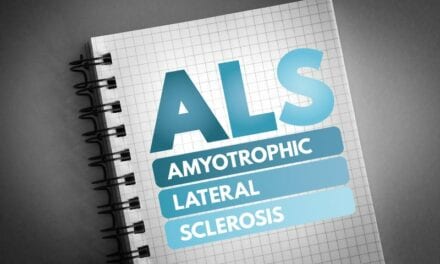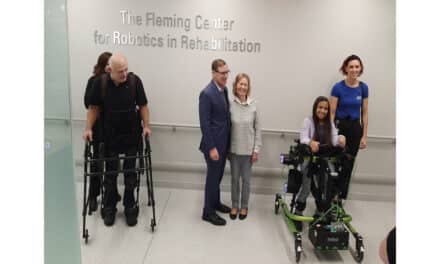 |
As we know, occupational or physical therapy is “outcome oriented,” which means therapists help clients work toward achievable performance goals. Obviously, the nature of the therapy depends on the individual and his or her environment, and as therapists, we consider the whole person when developing a therapy plan, often collaborating with physicians and other health care professionals to ensure a comprehensive approach.
Relative to work-related injuries, some of the keys to working toward the ultimate goal of returning a patient to work following injury are assessing the client and forming a professional perspective of a person’s priorities and needs, and setting collaborative goals for intervention. This includes focusing on wellness and prevention as well as the recovery to a normal life.
The primary intervention to prevent workplace injuries is education, proper staffing, and proper body mechanics. Many injuries occur secondary to shortness of staff and/or improper body mechanics, whether a client is fatigued or just unable to perform the tasks with one person.
NECESSARY STEPS
The first question to answer is, is it always the goal to get the injured worker back to work as quickly as possible? “Not necessarily as quickly as possible, because if they’re not ready to go, the potential for re-injury is there,” says Maureen Ziegler, OTR/L, of the Rehabilitation Institute of Chicago’s (RIC) Spine & Sports Rehab Center. “I really prefer that we get them back where they can return safely to work,” she adds. Ultimately, Ziegler explains, she’d like to have a formal job description in hand from the employer stating what the essential functions the employees have to meet in order to be able to do their jobs effectively and safely. “If they meet those job requirements, based on how they perform—in a work conditioning or hardening program, for example—then we can say, yes, they can go back to work and do that job.” RIC is a leader in patient care, advocacy, research, and educating health professionals in physical medicine and rehabilitation, with more than 30 locations in the Chicago and Southern Illinois areas.
“We also interview employees from day one to determine their perspective of job demands,” says Brian R. Hagen, DPT, MS, OCS, FAAOMPT, clinical assistant professor, regional director and facility director, CRS/UPMC, and program administrator, UPMC Center for Sports Medicine, Pittsburgh.
“Back injuries from lifting are the most common in terms of manual labor types of things we see,” Ziegler says. “Then we see a lot of neck and shoulder pain from people who have been sitting at their desks too long.”
Research shows, at least with low back injury, that the longer someone is off of work the higher the probability that he or she will not return to prior work function.
“The goal is to get the patient back to doing normal activity as soon as possible with respect to the injury and healing process,” Hagen says. “The order of return to activity is prioritized by importance to the patient and effect on the rehabilitation process. Return to work is considered high priority in dealing with someone with a work-related injury,” he stresses. This information is used to formulate goals and becomes the benchmark for return to work. This could be a lifting, postural, or repetitive goal, or all of the above. “If the job description and employee reports do not match, the ideal solution is for the therapist to look at the job in person,” Hagen explains.
IMPAIRMENT VERSUS DISABILITY
When working with disability/workers’ compensation systems, a distinction is usually made between impairment and disability. “Every client receives an initial evaluation which determines their clinical diagnosis,” says Kristen Tompkins-Sepesky, MPT, THE pt GROUP Physical Therapy in Greensburg, Pa. “The difference between an impairment and disability is that a disability pertains to a client’s ability to perform their occupational duties. This rating is typically performed by a physician, but can be performed by a therapist as well,” she adds. Impairment relates particularly to the patient’s physical loss to the body. “As an example, an accountant or a sedentary desk job client who lost a leg will have a permanent impairment relating to the fact that there was a loss to the body. However, they may not suffer any disability as related to their job,” Tompkins-Sepesky explains.
“An impairment is generally an objective measure that may be evaluated for change over time, such as ROM, flexibility, strength, and balance,” Hagen says. “Disability is the social impact of impairments and functional limitations. These can be things such as inability to work, dance, or go backpacking.” Assessment for compensations or accommodations for disabilities can be done for the appropriate clients. “As therapists we recognize the difference and provide documentation as to impairments, functional and physical limitations as we work with patients, but it is the physicians and legal systems [that] apply disability grades,” he adds.
WORK CONDITIONING OR HARDENING PROGRAM
“We have various workstations that people can do simulated job demands so that if they’re trying to get back to a specific job, we can tailor their exercise routine more toward what they would have to do on the job,” Ziegler says. “So let’s say, if somebody has to dig ditches, there’s a shoveling station where they can work on doing some shoveling, for example, or repetitive lifting, or something like that. It’s a little bit more functionally based than a regular exercise routine where they’re on the treadmill or lifting weights on a universal gym.” Ziegler stresses that the clients are usually there every day anywhere from 4 to 8 hours because they are trying to get their endurance back up to be able to handle getting back to work.
“Early physical therapy to treat acute sprain and strain injuries greatly improves the return-to-work rate and decreases lost time,” Tompkins-Sepesky says.
“Early return-to-work programs—light duty or modified duty—are replacing the ‘work hardening program,’ ” Hagen notes. “When a work hardening program is properly designed, it is highly effective and valuable in return of the employee to work or identification of limitations,” he says.
TRACKING PROGRESS
Progress is measured daily, but can vary on each individual case. A functional capacity evaluation (FCE) is done initially so there is an idea of what clients’ baselines are. The exercise routine is based off of where they start from, and ideally, you would increase that every week. “We just keep measuring that weekly as it goes along, based on demonstrating progress. Then we can say either they’ve met that job demand or they can’t meet it, for whatever reason, and then there would have to be some sort of restriction there if we’re going to try to get them back to work,” she says.
Hagen has had referrals for a work hardening program for as short as three visits and as long as 6 weeks. The therapist evaluates the patient, determines the goals, and establishes the expected time frame for achievement. “We like to evaluate short-term goals on a weekly basis. If a patient is not achieving weekly goals, the program may be modified as needed. A consistent failure to reach goals over a 2- to 3-week period needs to be assessed for reasons why the person is not achieving goals as initially expected,” he says. “Formal re-evaluations are done at 4 weeks typically but can be sooner if need be.”
Sometimes functional capacity is often used in conjunction with an independent medical exam to determine whether or not employees can do a job or their original job or at least go back to doing something.
PREVENTION
|
More information on return-to-work programs can be found in Rehab Management’s online archives. |
|
THE pt GROUP offers multiple forms of occupational solutions where they are able to go into specific work environments and educate the staff or make suggestions as to how their physical setup may be better for their employees ergonomically. “We also do specific lectures for specific injury prevention for employers that may have a high percentage of one or two types of injury. Included in this analysis and/or lecture is education on proper body mechanics to include lifting and bending,” Tompkins-Sepensky notes.
To maintain a proper safe work environment, you need good body mechanics and ergonomics. “Although we educate on the ideal environment, not all work environments are easy to maintain those proper body mechanics in. We do offer suggestions as how they may adapt those to their specific work environment for a specific task,” Tomkins-Sepensky says. “Although education is ideal in all settings, we acknowledge that not all occupations are set up to perform in these situations. We can always offer suggestions for improving clients’ work environments without altering from the primary goal for their specific jobs.”
Hagen performs FCEs to ascertain a person’s safe level of performance or work activity. “Knowing the purpose of the request for this test helps determine the specific questions that need to be addressed, or tests to be done,” he says. “The job description assists in determining the test design. Similar tests are performed for pre-employment, postoffer testing.” Hagen concludes. N
Nina Silberstein is a contributing writer for Rehab Management. For more information, contact





